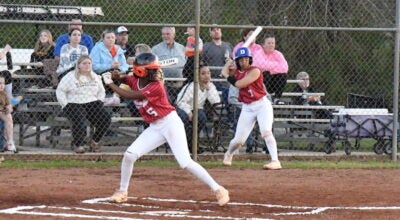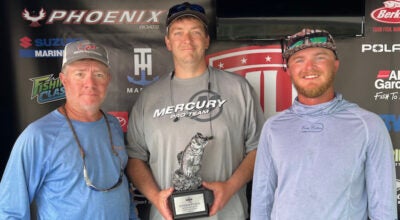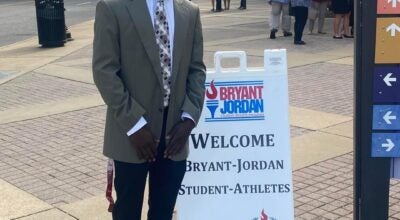In The Pits: Yellow line is always out of bounds
Published 10:51 pm Monday, October 6, 2008
TALLADEGA – The speech hasn’t changed in the seven years since NASCAR first delivered it during a 2001 driver’s meeting at Daytona.
“This is your warning,” race director David Hoots begins. “Do not go below the yellow line. If in NASCAR’s judgment you go below the yellow line to improve your position, you will be black-flagged.”
So why the surprise that Regan Smith was penalized Sunday for dipping below the out-of-bounds line to pass Tony Stewart on the last lap at Talladega Superspeedway?
The debate over the frantic finish raged on Monday, with claims that the rookie driver was robbed of his first career victory because NASCAR used its judgment to give a two-time series champion a coveted Talladega victory. NASCAR defended its ruling late in the day, then cleared up any confusion about what’s allowed on the final lap of a restrictor-plate race.
NASCAR put the yellow-line policy in place in its first return to Daytona following Dale Earnhardt’s fatal 2001 accident. By outlawing a portion of the asphalt at Daytona and Talladega, NASCAR shrunk the racing surface and took control of daredevil driving at the two most dangerous tracks on the circuit.
Stewart broke the rule that very first race, dropping two tires below the line to avoid running into Johnny Benson after Benson tried to block Stewart’s attempted pass. Stewart was immediately black-flagged — a directive he ignored — and had a heated exchange with NASCAR following the race.
Hoots has yet to change the language of his pre-race warning in the 29 Cup restrictor-plate races since. Seriously. The script is so tight, drivers, crew chiefs and any other regular attendee knows the directive by heart.
So when Smith passed Stewart below the line, then moved above it to cross the finish line first, Stewart knew the move would be disallowed.
“I’ve been a part of every one of the driver meetings since they implemented the yellow line rule, and it always starts with ‘This is your warning. Do not improve your position below the yellow line,'” Stewart said Monday. “If you are passing another car and you are below the yellow line, back off, fall back behind the car you are trying to pass and you won’t be penalized.
“The driver’s meetings have been very clear about that from Day 1. They’ve never wavered in the terminology they’ve used or the language they’ve used. It’s always been the same.”
But Smith disagreed, and found a good deal of support across the garage.
It can be argued that Stewart forced him below the line to block Smith from passing, a maneuver that can also be penalized if NASCAR believes the intent was obvious.
Although Stewart admits he was blocking, the two cars were running bumper-to-bumper — not side-by-side — when Smith made the decision to slide below the line. And, Stewart gave him room to return to the racing surface. Had Smith come back behind Stewart, no harm done. But Smith had already completed the pass by the time he moved back onto the surface.
NASCAR president Mike Helton said Monday that scoring officials did not believe Stewart forced Smith under the line. But it was mostly irrelevant because it wasn’t even the defense anyone was taking for Smith’s maneuver.
Instead, drivers cited a 2007 Truck Series race in Daytona when Benson went below the yellow line to pass Travis Kvapil for second place in a three-wide finish. NASCAR said at the time that Benson’s move was legal because the rule had wiggle room: If a driver can see the checkered flag waving, essentially anything goes over the final push to the finish line.
“Evidently Regan Smith knew what the deal was and went for it,” said two-time series champion Jimmie Johnson. “He saw the truck race, did some research and made a move he felt was going to win the race.
“What I was told is … when you could see the flagman, anything goes.”
Several drivers concurred with that interpretation, but Stewart was adamant no such leeway exists.
“They’ve never said that,” Stewart said with a chuckle. “If that were the case, you’d have guys lying in Turn 1 on the last lap saying they could see the start/finish line and see the flagman. But that’s never been said from NASCAR’s standpoint.
“They’ve always been very clear that you can not improve your position by passing under the yellow line, and if you interpret that any different than that you are more creative than I am, because I don’t know how it can be spelled out more clearly.”
Stewart also argued that if anyone had a question about the interpretation, it should have been asked when Hoots opened the floor at the end of Sunday’s meeting. No one raised their hand, and Smith later said he wanted to ask, but felt uncomfortable as a rookie requesting clarification.
Shame on Smith for being shy, but also shame on NASCAR for having yet another rule that is open to interpretation by competitors and enforced by judgment from series officials.
The rule should be rather simple — don’t drive under the yellow line, period. And if for some reason drivers end up below it, they should wait for a gap in traffic before easing back into the field and nothing else should be permitted.
Late Monday, Helton said no passing will ever be permitted under the yellow line at Daytona and Talladega, including “any passing below the yellow line near the start/finish line on the final lap.”
NASCAR can clear it up a day later, and argue that Smith was in the wrong on Sunday. But it’s leaders are just as much to blame for allowing so many gray areas in the rules that nothing seems black and white anymore.






